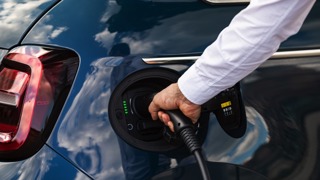By Tom Rowlands, Fleetcor’s managing director for global EV solutions, including Allstar
Nikola Tesla, the inventor of alternating current, envisioned a future where electricity could be transmitted wirelessly.
This unfortunately did not come to pass in his lifetime, but his vision has now been realised through the advent of many charging their phones wirelessly. One of the most exciting next steps in this technology is the potential for charging electric vehicles (EVs) wirelessly.
However, there are still some challenges that need to be addressed before this technology could become widely used, but it has the potential to make operating an EV more convenient and efficient with drivers no longer needing to plug in their vehicles, which would charge while resting in their parking place.
Clearly, before this could ever be the case, the technology would need to be standardised and manufacturers would need to be aligned. On top of that there’s also a speed challenge – wireless EV charging is not as fast as wired charging, and modern life continues to make time more of a premium. So, let’s explore the developments in this technology, the potential and the challenges.
Who’s leading the wireless way?
Car developers are making swift progress with this technology, with Korean car manufacturer Genesis and Sweden’s Volvo leading the way.
Volvo has been testing a wireless charging system for its XC40 vehicles as part of a three-year test which has resulted in a system that can charge at up to 40kW.
Meanwhile, Genesis’ system can charge at a more modest 11kW, which means that it would take a Nissan Leaf with a 40kWh battery about four hours to fully charge (which would give the driver approximately 270km in range), while Volvo’s offering would be fully charged in an hour.
It is worth noting that this is faster than the 3.6kW charge that is possible from a standard wall socket, but still pales in comparison to the speed of 100kW and 350kW charging times offered by increasingly common wired charging points.
The race for faster charging
Before going any further, it must be stated that wireless EV charging works with the same technology as wireless phone charging (which I mentioned earlier).
More specifically, magnetic resonance is used to transfer energy from a charging pad to a receiver built into the vehicle. This is important to note because some industry experts believe that the bottleneck in charging technology lies not with the charging pad itself, but with the vehicle's battery management system.
Upgrading this system would enable much faster charging speeds, which is crucial not only to compete with wired chargers but also to take full advantage of the benefits of wireless charging.
In comparison to wired charging, where drivers have to physically plug in chargers and initiate the process through a terminal, wireless charging would allow for charging whenever the vehicle is parked. This is especially beneficial for quick charging sessions, which are more efficient with faster chargers.
Moreover, the operation of wireless chargers is expected to be wireless as well. Which means that instead of needing a terminal like with wired chargers, the technology could directly communicate with the vehicle using wireless technology for payment purposes. Since wireless charging is primarily expected to be used in short bursts rather than long periods, this wireless payment interface would be highly practical.
The challenge of infrastructure
The current wired charging infrastructure in the UK is constantly improving, with over 45,000 charging points, on the public network. Replacing all these chargers with a new technology that can only be used by a smaller number of vehicles is not a feasible solution as things stand.
Moreover, upgrading the 810,000 existing EVs on the roads to support wireless charging may also prove to be difficult, necessitating the introduction of new vehicles that are equipped with wireless charging capabilities.
Finally, despite progress in the sector, we still have some way to go in bringing the current infrastructure up to par with the convenience of refuelling traditional ICE vehicles at petrol pumps.
Keep an eye on the now
While it is important to consider the exciting future benefits and advantages of wireless charging, it should not overshadow the now. Businesses are all on the journey to embracing electric and there are compelling reasons to make the switch immediately.
This is especially true considering the ongoing technological advancements and infrastructure improvements leading up to the 2030 deadline for the sale of new petrol and diesel vehicles.
Therefore, business stakeholders should stay updated on developments and be prepared to adapt swiftly to changes in the mobility landscape, making informed decisions throughout the transition process.

























Barzdukas - 21/08/2023 21:51
Actually, wireless charging for electric vehicles is not the same technology as that used to charge your phone. Your phone uses the Qi standard, which is a type of inductive charging. Wireless EV charging uses a different technology called magnetic resonance which is much more efficient, more powerful, and more forgiving than Qi.